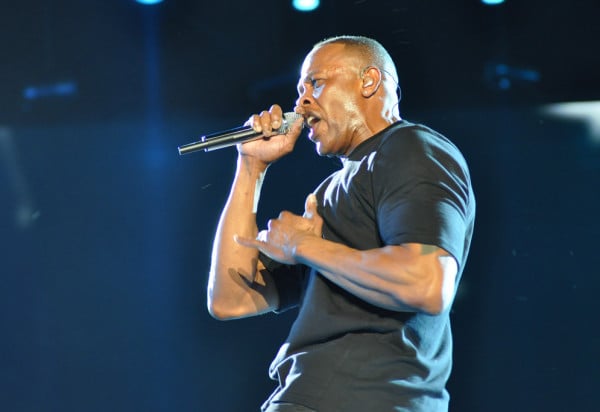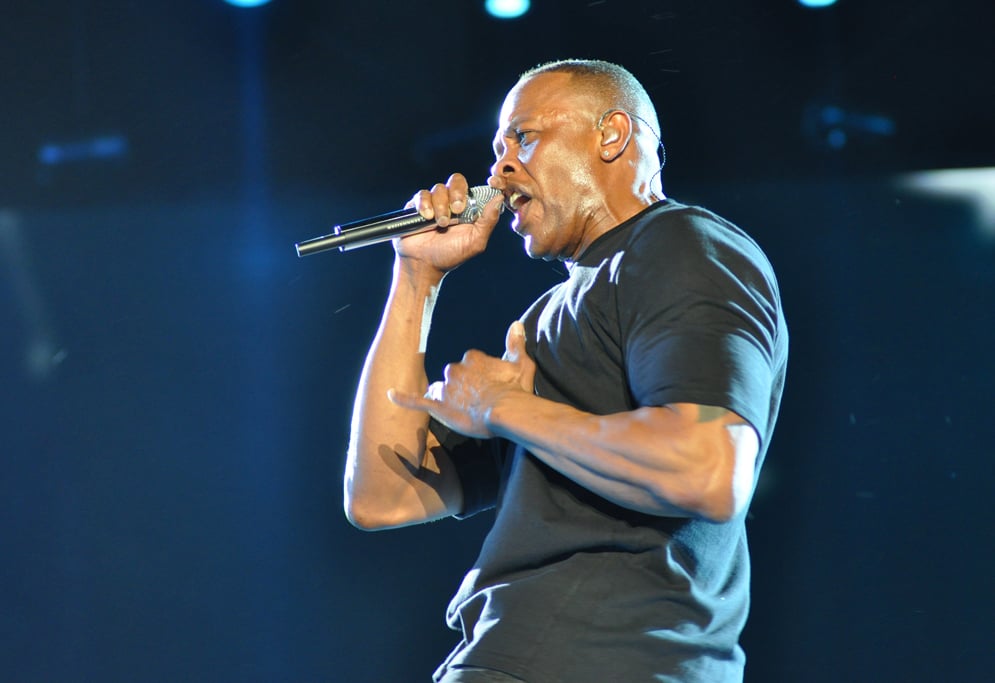
For hip-hop heads, the West Coast ruled Coachella weekend two. Sets from Vince Staples, Anderson .Paak, SZA and Ice Cube brought out a slew of legendary guest artists from the wild west, and sounds inspired by life on the sunny streets of Los Angeles dominated the desert air. While other acts from New York (A$AP Rocky) and the South (Run the Jewels) worked the main stages too, none could quite compare to the show put on by the hometown heroes.
Among the diverse group of performers I’ve liberally labeled as representing the West, no one garnered as much attention as Ice Cube. The legendary Compton rapper and entertainer took the main stage on Saturday night to deliver a historic set. Emerging astride a hand-shaped throne cast in the form of a westside “W,” Cube delivered a collection of memorable hits from his solo career, like the tongue-in-cheek “Gangsta Rap Made Me Do It” and the characteristically belligerent “Check Yo’ Self.” He was accompanied by fellow emcee and hype man WC (“Dub Cee”), and brought out L.A. rapper The Game early on in his set.
Then, replicating the success of weekend one, Cube assembled DJ Yella and MC Ren — two-fifths of the original Compton supergroup N.W.A. — to testify to the “strength of street knowledge” first established in their 1988 debut album, “Straight Outta Compton.” Eazy-E, another core member of N.W.A. who passed away in 1995, was represented by his son, Lil E, who delivered his father’s iconic “Boyz-N-The Hood” verse during a brief guest spot: “Cruisin’ down the street in my six-fo’ … ” And with images of recent police brutality and black resistance projected on the multistory screens of Coachella’s main stage, Cube encouraged an obliging audience to throw their middle fingers in the air and join him for a rowdy rendition of “Fuck Tha Police.” While a lot of Cube’s lyrics haven’t aged well after a long career, this sentiment certainly struck a chord in 2016.
Still, the stage was short one member, that is, until Ice Cube interrupted the set. “Somebody’s missing,” he noted. “Is there a doctor in the house?”
And with that, history was made. When Dr. Dre stepped on the stage, the crowd turned electric, and with good reason: It was the first performance featuring every living member of N.W.A. since their split in 1989. (At 27 years, that hiatus is almost twice as long as Coachella has existed.)
Led by the good doctor, the reunited supergroup performed “Still D.R.E.” and “California Love,” two West Coast classics. Although neither are N.W.A. originals — they’re the result of Dr. Dre’s collaborations with Snoop Dogg and Tupac Shakur, respectively — they were the night’s biggest crowd pleasers, a trip through time that, for a moment, made hip-hop mythology as real as the desert heat.
After N.W.A. left the stage, Cube proceeded to bring out Kendrick Lamar — the current king of the West, if not all of hip-hop — to perform a slowed-down version of his eighth track from “untitled unmastered,” before exploding into a blistering rendition of “Alright.” To top it all off, Cube took the stage alone and left us with his feel-good hit “It Was A Good Day.” It couldn’t have been a more fitting ending.
But while Ice Cube’s set was built entirely off throwbacks, L.A. based rapper Anderson .Paak’s Sunday night show represented a new wave, and he came through with one of the best performances of the festival. He and his band, The Free Nationals, displayed tremendous versatility, building energy from song to song as they navigated a vast swath of genres including R&B, disco, ‘90s hip-hop and soul.
To top it all off, .Paak himself is an absolutely jaw-dropping performer on his own, with a confident but laid-back and airy flow that can melt into melody without a moment’s hesitation. He worked the crowd to a frenzy before jumping behind the drums to lead his band through a set selected from his debut album, “Malibu,” with songs like “Come Down” and “Carry Me” demonstrating some serious lyrical chops. While taking over the drums, he somehow kept rapping and singing without pause or any sign of strain, with syllables and snares bouncing off each other in a polyrhythmic flow of funk.
After successfully proving himself more than worthy of his spot at the festival with a deadly combination of soul, swagger and downright musical genius (“Last year I was playing the Uber tent,” he noted at one point during his set), .Paak teased an early exit before asking, “Do you mind if I bring out one of my homies?” He introduced his guest with a beat — ah-ring-king-king, ah-ring-king-king — as Kendrick Lamar emerged to the unmistakable opening bars of “Backseat Freestyle.” The crowd lost their minds.
.Paak wasn’t done though, and after another faux exit, he came back with none other than Dr. Dre, his recent collaborator and mentor, to perform “California Love,” “Still D.R.E.” and “The Next Episode.” Thanks to the relatively small indoor stage, the energy from the crowd surpassed even that of Ice Cube’s main stage event, and the set that would have been an afterthought for most festival-goers turned into a must-see showcase of L.A. hip-hop talent, past and present.
Like gangsta rap and G-funk, Coachella has become much bigger than just a West Coast phenomenon. Year after year, it produces some of the best lineups of any festival in the world, and it’s hard imagine a more picturesque setting than the palm tree-lined polo grounds of Indio. And while it’s increasingly a worldwide affair, it maintains a distinct L.A. vibe — when performers like Ice Cube and Anderson .Paak take the stage, it feels like they’re playing to a home crowd.
During a weekend dominated by summer outfits, brutal desert weather and overpriced amenities, the music still managed to be the most L.A. thing about the whole experience. That’s an impressive feat in and of itself, and one that will be hard to top for years to come.
Contact Benjamin Sorensen at bcsoren ‘at’ stanford.edu.
